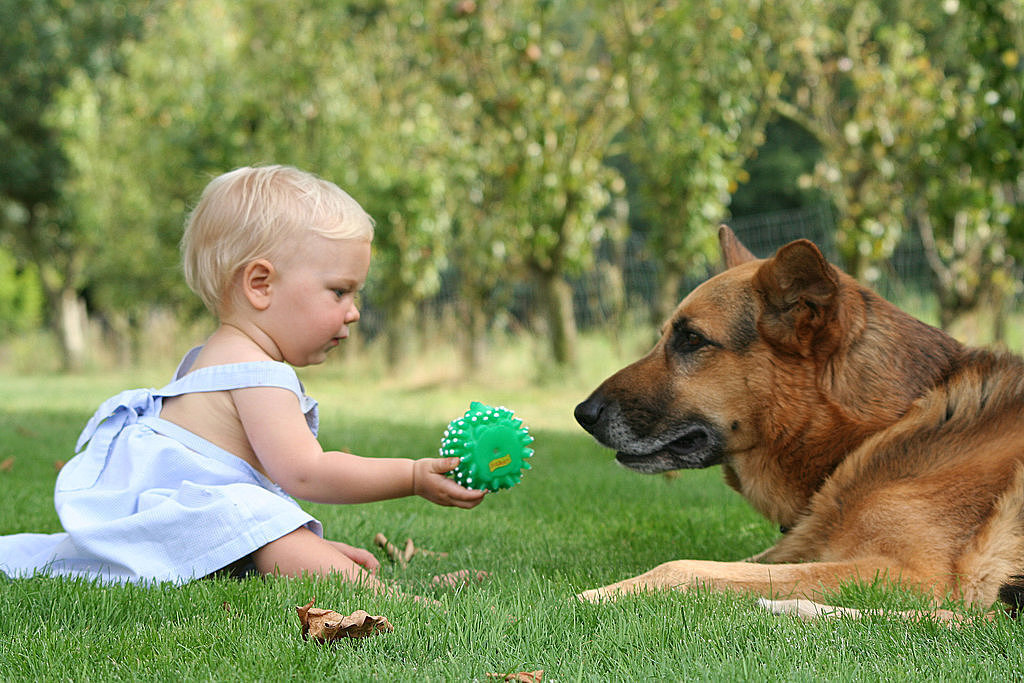
When you hear the word “bully,” you probably think of the kid who terrorizes the playground. But, believe it or not, dogs can be bullies, too! Like his human counterpart, the dog doing the bullying isn’t an inherently mean animal. More often than not, he just doesn’t understand how to socialize properly, so he gets too worked up to remember how to play nicely or notice when his playmate doesn’t seem to be having fun. Unlike kids on the playground though, it can sometimes be hard to tell when dogs are being bullied. Here’s an overview on dog bullying and how to put a stop to it.
What Types of Dogs Tend to Be Bullied?
Submissive, gentle-natured dogs are often the target of bullying, regardless of their size. Of course, it’s important to remember that what may look like fighting between two very physical dogs can be a romping good time for the dogs themselves (if they have the same type of personality and play preferences). This is why it’s crucial for you to take your dog’s typical behavior and temperament into account when determining whether or not bullying is taking place.
What Are the Signs That Your Dog May Be the Target of Bullying?
You should be on the lookout for these signs that your dog is scared or not engaging in reciprocal play:
She tucks her tail between her legs.
He yawns or licks his lips.
She hides or tries to avoid other dogs.
He rolls over in a submissive manner.
She barks while backing away from another dog.
He is always the one being chased by another dog — he doesn’t take a turn as the chaser.
She is mounted by another dog repeatedly.
Another dog steals his food, water or toys.
How Can You Help Your Bullied Dog?
One way that you can help your bullied dog overcome this difficult time is to boost her self confidence. According to the American Kennel Club, one of the ways you can do so is to expose her to new animals and people on a regular basis. This type of socialization will allow her to become more comfortable around other dogs. If the dog park is too overwhelming for your canine companion, you can start by organizing doggie playdates with your friend’s well-behaved pets.
What Should You Do When You See Your Dog Being Bullied?
While you may feel the urge to step in as your dog’s protector, it’s important to remember that you should never try to discipline another canine that you meet in the park. Check out Master Dog Park Etiquette for some more tips.
Instead, focus on your own pet. Start by calling him over to you. If you feel like the situation is spinning out of control, you should simply leave the vicinity. And if you find that there are certain canines that never play well with your own, you should just avoid the dog park entirely when you see them there.
What Should You Do if Your Dog Is the Bully?
You may find that — yikes! — your dog is the one doing the bullying. As such, it’s just as important to be aware of what might indicate aggressive behavior in your own pet. If you learn to recognize when your dog is getting overexcited, you’ll be able to calm him down before he acts out.
According to the Atlanta Humane Society, you should watch out for these signs of aggression:
The hair on his back raises.
She crouches.
He growls.
She puts her ears forward and holds her tail rigid, high above her back.
He moves toward another dog slowly.
If you find that your dog is acting like a bully, you can train her to play nicely with others, but this will, of course, take some work on your part. You should start by teaching her a “pay attention” command that will trigger her to come sit in front of you and look at your face.
Work with her on this until she follows the command consistently. Then, when you see your dog starting to get overexcited, you should call her over using this command and then speak to her gently to calm her down. Be sure to give lots of positive reinforcement and treats during this learning process.
-www.care.com







